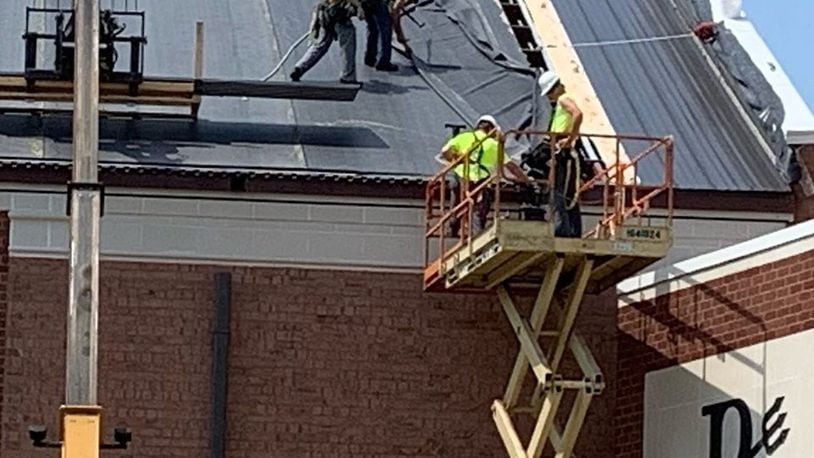RELATED: Details unclear on DPS’ $30M-plus facilities spending plan
The answers ranged from about $3.5 million per year in Northmont to $5 million in Springboro, $6 million in Centerville, $8 million in Kettering and $11 million in Dayton. Those were costs to maintain existing facilities and did not include new construction projects, such as Kettering’s new auditorium.
As with most school costs, salaries and benefits top the list, in this case paying for both skilled trades maintenance staff, as well as the many custodians who keep buildings clean and functioning from day-to-day. Other costs include contracts with outside companies for projects such as roof repair or computer networking upgrades, plus maintenance materials and custodial supplies.
Penn State University’s Center for Education Policy Analysis said recently that “a growing body of research has found that school facilities can have a profound impact on both teacher and student outcomes.” They said the quality of school facilities affects teacher recruitment and effort, as well as student health, behavior and achievement.
RELATED: Valley View, Troy have school bond levies on March ballot
“School buildings that are well maintained and operate efficiently provide a safe and effective learning environment for students and staff members,” Centerville schools spokeswoman Sarah Swan said. “Recent projects have included the installation of more energy-efficient heating and air conditioning units and LED lighting, which ultimately save our district money in utility fees that can instead be used for classroom needs.”
The tax levy that Centerville schools voters approved in November adds about $1.8 million per year of “permanent improvement” funding, which must be used on longer-term assets, including buses, computers and facility repairs.
In the past three years, 11 of 40 local school districts have sought voter approval of bond issues to replace or dramatically upgrade school buildings, with six approved in West Carrollton, Oakwood, Carlisle and Waynesville, plus the Miami Valley and Greene County career centers.
Meanwhile, voters in Centerville, Piqua and Brookville have approved increases in permanent improvement taxes in that span, while 11 other districts have renewed existing tax levies for facility spending.
RELATED: Vandalia schools studying facilities options
Of Northmont’s $7 million in facility maintenance costs the past two years, about $1.1 million has come from two funds specially dedicated for permanent improvements. One of those funds is required as part of their 2011 partnership with the state to build a new high school and early learning center.
“By utilizing (those funds), we lessen the impact on our general fund, which allows us to direct more spending to classroom instruction,” Northmont spokeswoman Jenny Wood said. “Also because of the other two funds, we have been able to extend our levy schedule to a 6-7 year span versus the 4-5 year span we used to have.”
One of the less talked-about expenses in large school districts with multiple parking lots is paving and asphalt repair.
RELATED: Legislator explains new school funding proposal
Dayton Public Schools is considering $35 million in facility repairs over the next three years, on top of its millions in base annual spending. The single largest line item on Dayton’s project list is $12 million over three years for “asphalt repair/sealing/replacement” for existing parking lots, driveways and playgrounds. That doesn’t include another $1.28 million planned for expansion and construction of new parking lots.
When Kettering schools asked voters for a permanent 3.4-mill facilities levy in 2016, their capital plan called for $2.8 million in asphalt work over 10 years. Centerville school officials pointed out they have 1.7 million square feet of pavement to maintain – the equivalent of 30 football fields.
There are plenty of other projects to consider. Director of Business Services Ken Lackey said Kettering schools have invested in things that have a direct impact on education, such as installing sound systems in elementary school rooms to allow students in all parts of the room to hear the teacher better.
RELATED: What changes should state make to school report cards?
Swan said permanent improvement funds also go toward safety initiatives, including replacement of doors and windows, and improving communication technology.
“Warm, safe and dry comes first,” Lackey said when asked about spending priorities. “Other wants, needs and desires are evaluated as to the impact they will have on student instruction and the outcomes we desire in our strategic plan.”
About the Author
